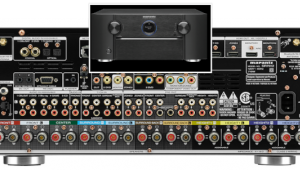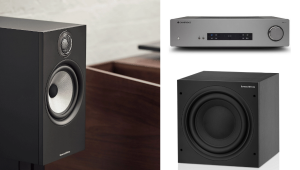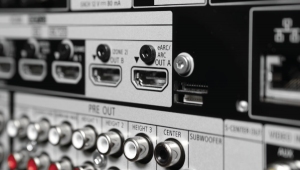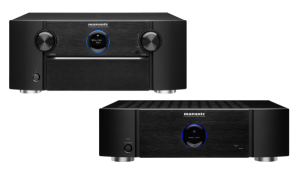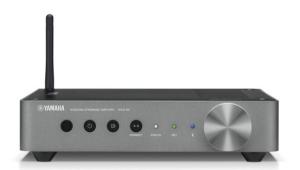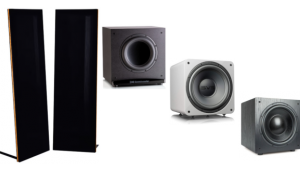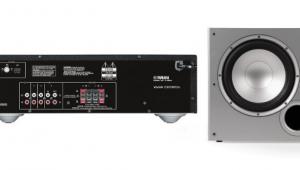RPTV, KEF, Kuro

I'm planning to buy a 60- or 70-inch HDTV in a few months. The room where it will live is not totally darkened like a home theater. Besides watching TV and DVDs, we also want to hook it up to a PC. With this requirement, is LCD TV the way to go?
In May 2007, HT editor Shane Buettner said in his column that RPTVs offer better performance for less money with screens bigger than 50 inches. Almost two years on now, do you think this is still true? The slim form factor is attractive but to me performance is more important. I wonder if there are any RPTV models on the market that provide a PC connection.
Debbie Li
RPTVs still offer the most bang for the buck in larger screen sizes, and they can be plenty bright, though they are not without their own problems, such as poor uniformity and off-axis performance, not to mention the expense of having to replace the lamp every year or two. In the last two years, however, most manufacturers have gotten out of the RPTV businessthe only ones left are Samsung and Mitsubishi. Seeing as how it's a product category that's becoming extinct, I don't generally recommend them any more. On the other hand, 60- or 70-inch flat panels are usually much more expensive than RPTVs of similar size, so if you need to conserve your resourcesand who doesn't these daysit might be fine.
As for a PC input, the last Samsung RPTV reviewed here, the HL61A650, has one, but the last Mits we reviewed, the WD-65835, does not. On the flip side, the $1800 Samsung did not perform as well as the $3000 Mits.
Keeping His KEFs
I'm plotting to upgrade my audio from 2-channel to 5.1. As much as I'd like to spend a few thousand dollars on a complete new speaker system, I don't see it happening in the current economic climate. I've got a pair of high-quality front speakers (KEF 104/2); do you have any suggestions or guidelines for selecting a pair of surround speakers and a center-channel speaker to complement my existing investment?
Mark Harris
The most important thing about surround-speaker systems is to match the tonal characteristics of all the speakers as much as possible. This allows the sound to move seamlessly from one to another, creating the illusion of a continuous soundstage. Thus, I recommend that you get KEF center and surround speakers to match the 104/2s. You're going to need a subwoofer as well, but it's not quite as critical to get one from the same manufacturer as the main speakers.
Unfortunately, the 104/2 is an old modellike 20 or 25 years oldthat doesn't include the Uni-Q point-source array, while most of KEF's current lineup uses Uni-Q, so it will be difficult to tonally match your speakers with anything KEF makes today. I talked with a KEF rep, who suggested you have two options. First, you can look for a used Model 100C center, though even that model has Uni-Q, so it won't match the 104/2s perfectly; he had no suggestions for older matching surrounds. Second, you could get a current KEF center and surrounds from the XQ or Reference series and use them with the 104/2s until you can afford to upgrade to matching L/R models from the same series. That way, you end up with a new, modern, matching system.
Both series have subs, which would be good choices, but if you want to save some money, consider Hsu subs, which offer great value.
Pioneer or Elite?
With the departure of Pioneer from the plasma business, I have decided to purchase a Pioneer plasma while they are still available. I have narrowed my choice to either the Elite PRO-111FD or the regular-line PDP-6020FD. I have read all the reviews and know the benefits that the Elite plasmas offer. However, I've just read Tom Norton's review of the Integra DTR-9.9 A/V receiver that I am ready to purchase. With it's video adjustment capabilitiesspecifically, color tracking and gammawould it be possible to calibrate the 6020 through the Integra and obtain picture results that would more favorably compare to the Elite model than it does with Pioneer's very limited choice of settings on the 6020?
Bill Orfeo
I'll let Tom take this one:
I was not able to try the Integra with the Pioneer 6020, but it's likely that the controls on the Integra could correct the 6020's grayscale quite wellbut only with the correct tools and training, as always. However, the 6020's color gamut was somewhat off, and neither the Integra nor the Pioneer offers a color-management system that's up to the job of fixing it, though the deviation is not severe. The Elite models do not have an adequate color-management system either, but then again, they don't need it. We have found that the color gamut of the Elites' Pure mode (which the standard sets do not have) has been consistently on the money.
So the Elites offer better color-gamut performance, even compared with the Integra/6020 combo, but I suspect that in a side-by-side comparison, the difference would be relatively subtle. A slightly oversaturated color gamut is less visible than color-temperature irregularities.
If you have a home-theater question, please send it to scott.wilkinson@sorc.com.
